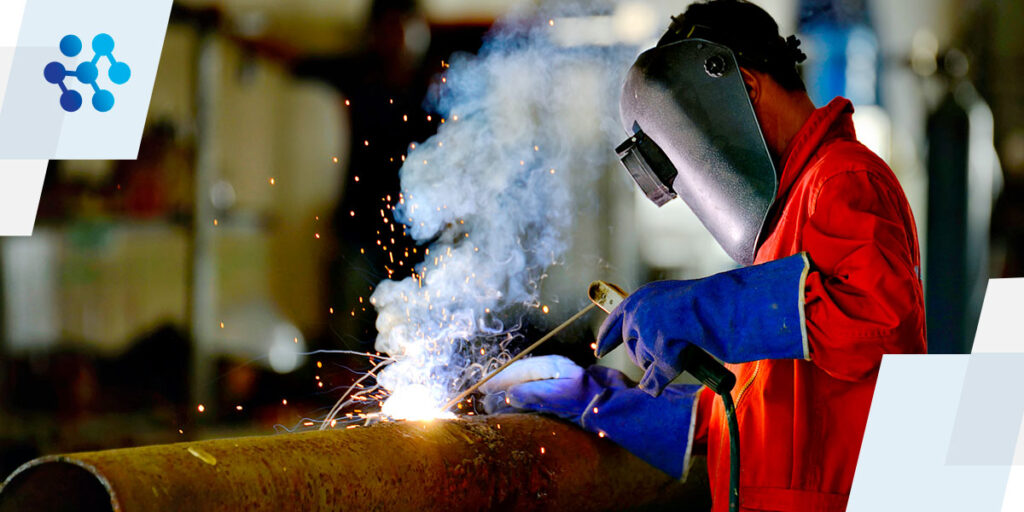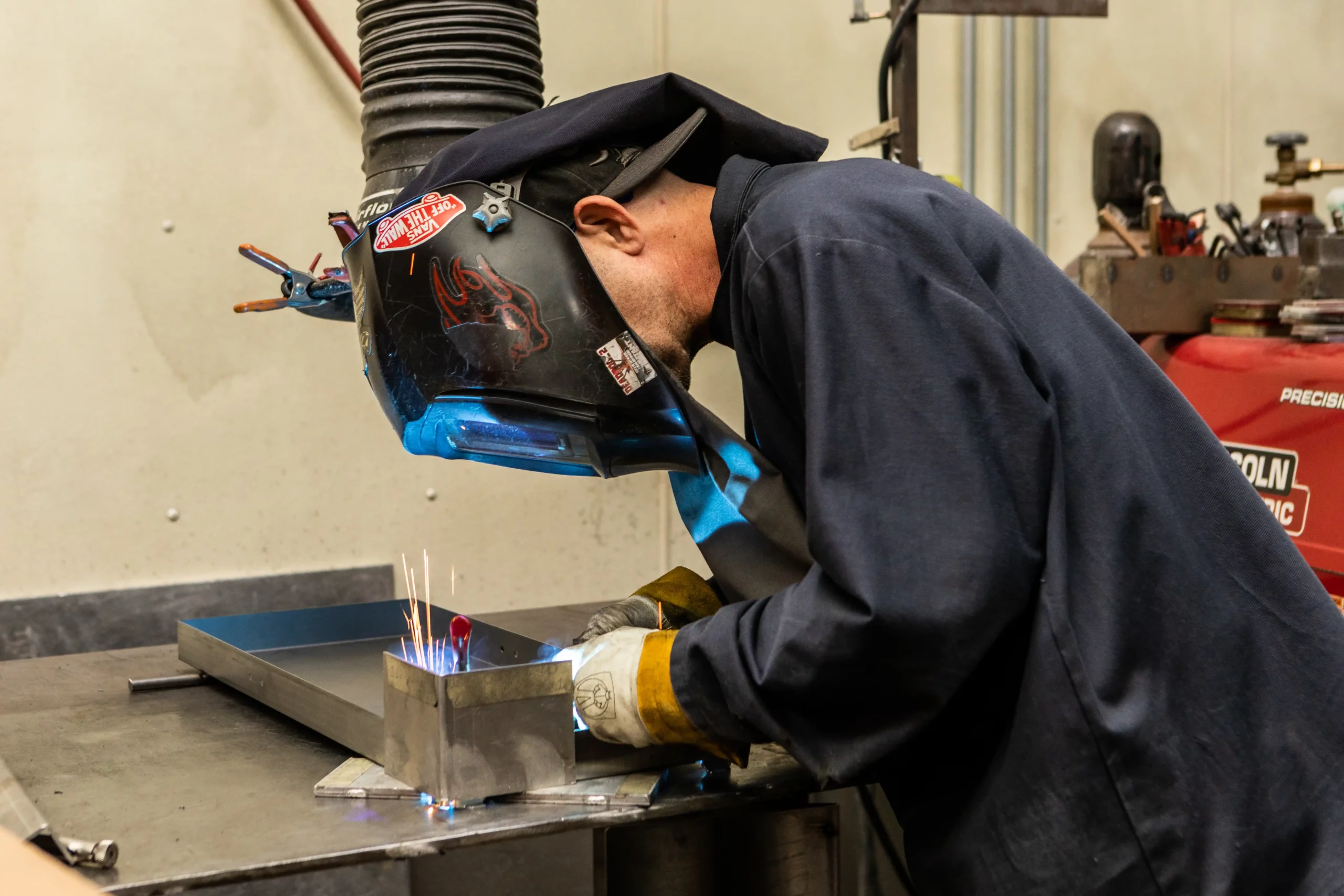Usual Welding Fixing Issues and Just How to Address Them Successfully
Welding repair work usually experience a series of problems that can threaten the honesty of the final product. Typical troubles include poor infiltration, porosity, and imbalance, among others. Each defect provides unique challenges that require certain strategies for resolution. Comprehending these issues is vital for welders intending to improve their skills and end results. This discussion will discover these usual welding fixing issues and effective approaches to resolve them.
Poor Infiltration
Poor penetration occurs when the weld steel fails to fully fuse with the base material, resulting in weak joints and prospective architectural failings. This problem usually originates from insufficient warmth input, incorrect electrode angle, or incorrect welding speed. Welders might run into poor infiltration as a result of a miscalculation of the necessary specifications for a details product thickness or kind. Additionally, contamination on the base product's surface area can prevent effective bonding, exacerbating the problem. To attend to insufficient infiltration, welders need to ensure proper setups on their tools and keep a tidy work surface. Normal inspection of welds is advised to determine any kind of shortages early, enabling for timely corrections and the avoidance of endangered architectural honesty in welded assemblies.
Porosity
Porosity is a common issue in welded joints that materializes as tiny gas bubbles entraped within the weld steel. This flaw can jeopardize the integrity of the weld, bring about reduced strength and potential failing under stress and anxiety. Montana Mobile Welding and Repair Belgrade Welding. Porosity generally develops from contamination, moisture, or inappropriate welding techniques, which permit gases to run away into the liquified weld swimming pool. To deal with porosity, welders must assure appropriate surface area prep work, preserve a tidy working atmosphere, and make use of suitable welding specifications. In addition, choosing the best filler product and protecting gas can reduce gas entrapment. Routine evaluation and testing of welds can assist identify porosity early, ensuring timely restorative actions are taken, thereby protecting the high quality and integrity of the welded structure
Misalignment
Misalignment in welding can occur from various factors, including improper arrangement and thermal growth. Comprehending the root triggers is crucial for reliable resolution. A number of modification strategies are readily available to realign parts and ensure structural honesty.
Sources of Imbalance
Welding imbalance often comes from a variety of underlying concerns that can jeopardize structural stability. One primary reason is inappropriate fit-up of parts prior to welding, which can cause spaces and uneven surfaces. Variants in thermal growth throughout the welding process can additionally lead to distortion, specifically if the materials being signed up with have different coefficients of expansion. Furthermore, inadequate fixturing and securing may fail to hold components securely in position, causing motion throughout welding. Poorly conserved equipment, including welding makers and tools, may introduce variances in the weld grain, further adding to imbalance. Ultimately, operator mistake, coming from not enough training or experience, can likewise play a substantial role in creating misaligned welds.
Improvement Methods Readily Available
Addressing imbalance effectively needs a combination of corrective strategies customized to the details problems at hand. One usual approach is the use of fixtures or jigs to hold parts in the right setting during welding, making certain constant alignment. In addition, pre-heating the materials can help minimize distortion and boost fit-up. For substantial imbalance, mechanical realignment methods, such as making use of hydraulic jacks or clamps, can be used to remedy the placement prior to welding. Post-weld warmth therapy might also be needed to eliminate tensions caused by imbalance. Mindful examination and adjustment throughout the setup stage can protect against imbalance issues from coming to be significant issues, promoting a smoother welding procedure and boosting overall structural honesty.
Distortion
Distortion is an usual obstacle in welding that can arise from various aspects, consisting of unequal home heating and air conditioning. Recognizing the root causes of distortion is important for applying effective prevention strategies. Resolving this issue not just boosts structural integrity but also improves the total quality of the weld.
Reasons for Distortion
When subjected to the extreme warmth of welding, materials frequently undertake adjustments that can lead to distortion. This phenomenon mainly occurs from thermal expansion and tightening throughout the welding procedure. As the weld location heats up, the product expands; upon cooling, it gets, which can create interior tensions. Additionally, uneven heating across a work surface can exacerbate these stresses, resulting in bending or flexing. The kind of material likewise plays a significant function; steels with differing thermal conductivity and coefficients of development may respond in different ways, resulting in unpredictable distortions. Moreover, inadequate joint design and poor fixturing can contribute to misalignment throughout welding, increasing the chance of distortion. Understanding these reasons is important for effective welding fixing and prevention strategies.
Avoidance Techniques
Effective prevention strategies for distortion throughout welding concentrate on regulating warmth input and making sure appropriate joint style. Preserving a constant warmth input helps to lessen thermal expansion and tightening, which can bring about distortion. Making use of methods such as preheating the work surface can likewise reduce the temperature level gradient, promoting uniform heating. Furthermore, picking ideal joint designs, such as T-joints or lap joints, can boost stability and lower stress and anxiety focus. Executing proper fixturing to protect the workpieces in position further help in keeping alignment throughout the welding process. Staggered welding series can disperse heat much more uniformly, preventing localized distortion. By using these approaches, welders can significantly lower the chance of distortion and enhance the total top quality of their welds.
Breaking
Splitting is a typical concern come across in welding repair services, dewalt welding table commonly arising from different aspects such as inappropriate cooling prices, material choice, or inadequate joint prep work. The occurrence of fractures can substantially compromise the honesty of the weld, bring about potential failures during operation. To resolve this concern, welders need to first assess the source, ensuring that products are suitable and suitably selected for the specific application. In addition, regulating the cooling rate throughout the welding process is vital; rapid air conditioning can webpage induce stress and lead to cracking. Appropriate joint design and preparation additionally add to lessening the danger. Implementing these strategies can boost weld quality and longevity, ultimately reducing the probability of fracturing in finished weldments.

Insufficient Blend
A considerable concern in welding repair services is insufficient fusion, which happens when the weld metal does not appropriately bond with the base material or previous weld passes - Montana Mobile Welding and Repair Welding. This problem can lead to weaknesses in the joint, potentially jeopardizing the stability of the bonded framework. Factors adding to insufficient blend consist of not enough warmth input, incorrect welding technique, and contamination of the surfaces being signed up with. To address this concern properly, welders ought to ensure appropriate pre-weld cleaning and surface prep work, in addition to readjust their welding specifications to accomplish appropriate penetration and combination. Routine examination throughout the welding procedure can likewise help identify incomplete combination early, enabling for timely restorative procedures to boost the general quality of the weld
Overheating
While welding repairs can boost structural stability, overheating provides a considerable challenge that can lead to product degradation. Extreme warmth during welding can change the mechanical properties of metals, causing lowered toughness, increased brittleness, and bending. This sensation is especially important in high-stress applications where architectural dependability is vital. Recognizing getting too hot can involve aesthetic examinations for staining or distortion, as well as monitoring temperature level during the welding procedure. To mitigate the dangers linked with getting too hot, welders ought to utilize suitable hard facing strategies, such as managing heat input, adjusting travel speed, and utilizing ideal filler products. Additionally, applying pre- and post-weld warmth treatments can aid bring back material residential or commercial properties and improve the general quality of the repair service, making sure long-lasting performance and security.
Regularly Asked Inquiries
What Are the Typical Signs of a Welding Problem?

How Can I Evaluate My Welds for High quality?
To examine welds for high quality, one can utilize aesthetic examinations, ultrasonic testing, and radiographic approaches. Each technique guarantees structural stability, recognizes flaws, and confirms adherence to defined criteria, inevitably improving the reliability of the bonded joints.
What Safety Preventative Measures Should I Take While Welding?
When welding, one ought to prioritize safety and security by using suitable personal protective devices, making certain correct ventilation, safeguarding flammable products away, keeping a clean workspace, and understanding surroundings to avoid injuries and mishaps.
Can I Repair a Weld Without Renovating the Entire Joint?
Repairing a weld without remodeling the whole joint is feasible, relying on the damage (Montana Mobile Welding and Repair Belgrade Welding). Techniques such as grinding, including filler material, or using a welding process can properly resolve specific flaws while protecting the surrounding structure
What Tools Are Important for Effective Welding Services?
Crucial devices for effective welding fixings include a welding machine, cable brush, grinder, protective equipment, clamps, and filler materials. Each device plays an important duty in making sure quality and security during the repair work procedure. Porosity normally occurs from contamination, moisture, or improper welding strategies, which allow gases to run away into the molten weld pool. Improperly maintained devices, consisting of welding devices and devices, might present incongruities in the weld grain, further contributing to imbalance. When subjected to the extreme heat of welding, products usually undertake changes that can lead to distortion. Fracturing is a common concern encountered in welding repair services, typically resulting from different aspects such as improper cooling prices, material selection, or inadequate joint prep work. A significant issue in welding repairs is insufficient combination, which happens when the weld steel does not effectively bond with the base material or previous weld passes.